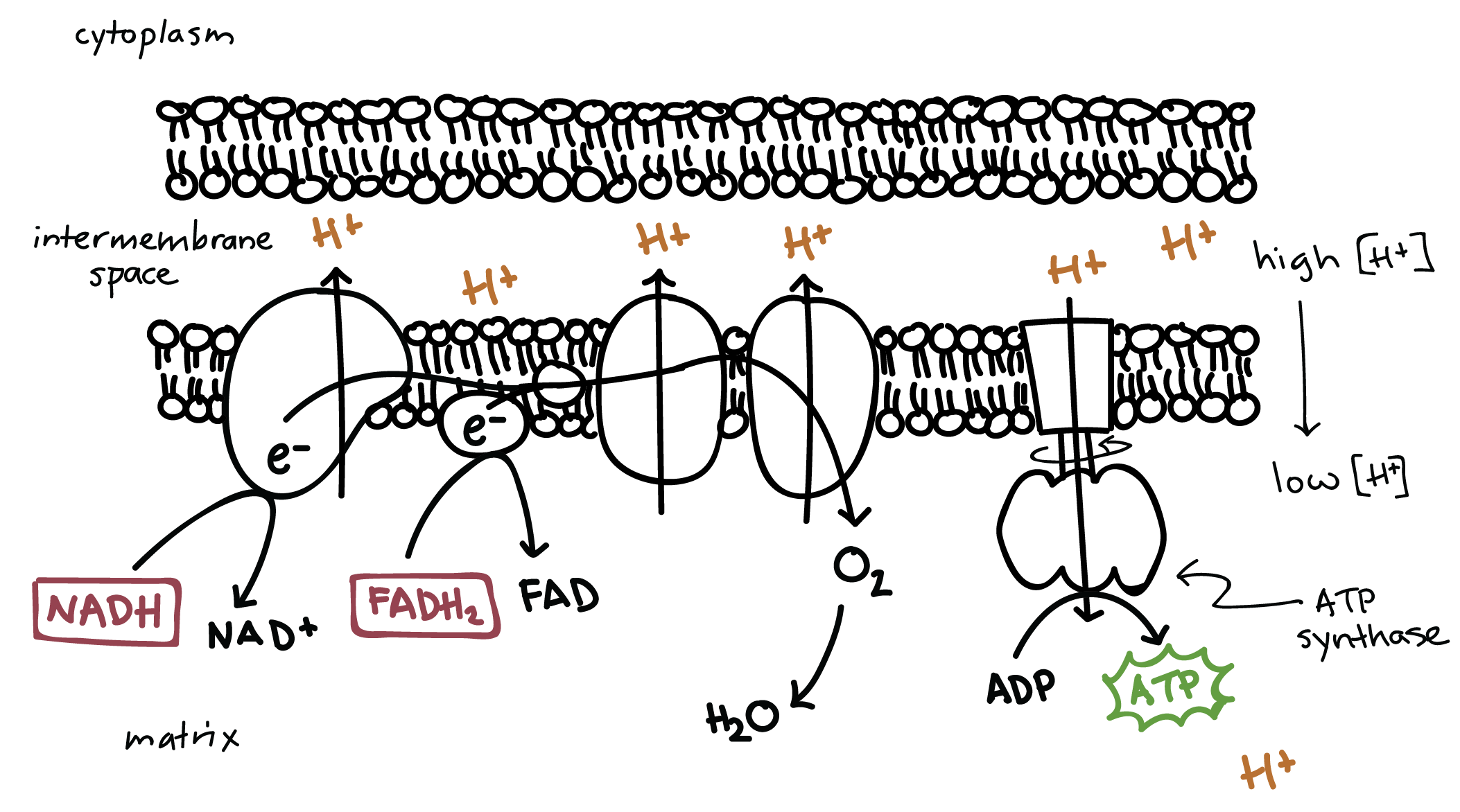Por que 30 ou 32 ATP?

Is it 30 or 32 ATP
Cells such as cardiac muscle cells or liver cells that utilize the malate-aspartate shuttle generate 32 ATP molecules per glucose while cells such as skeletal muscle cells which utilize the glycerol 3-phosphate shuttle generate 30 ATP molecules.
What produces 30-32 ATP
Cellular respiration
Cellular respiration is a metabolic pathway that uses glucose to produce adenosine triphosphate (ATP), an organic compound the body can use for energy. One molecule of glucose can produce a net of 30-32 ATP.
What makes 32 ATP
In a eukaryotic cell, the process of cellular respiration can metabolize one molecule of glucose into 30 to 32 ATP. The process of glycolysis only produces two ATP, while all the rest are produced during the electron transport chain.
Is 32 or 36 ATP produced
In eukaryotic cells, the theoretical maximum yield of ATP generated per glucose is 36 to 38, depending on how the 2 NADH generated in the cytoplasm during glycolysis enter the mitochondria and whether the resulting yield is 2 or 3 ATP per NADH.
Is it 32 ATP or 38 ATP
During citric acid cycle, 36 ATP molecules are produced. So, all together there are 38 molecules of ATP produced in aerobic respiration and 2 ATP are formed outside the mitochondria.
Is it 38 ATP or 36 ATP
Explanation for Correct option: The citric acid cycle produces 36 ATP molecules. So, in aerobic respiration, a total of 38 molecules of ATP are created, with 2 ATP molecules formed outside the mitochondria.
What yields 30 ATP
The majority of ATP synthesis occurs in cellular respiration within the mitochondrial matrix: generating approximately thirty-two ATP molecules per molecule of glucose that is oxidized.
Are 32 ATP produced in aerobic respiration
Because oxygen is required for aerobic respiration, it is linked to hydrogen ions to form water. ETP causes the production of 32 ATPs. A total of 36 ATPs are produced from aerobic respiration for each glucose that enters glycolysis (2 from glycolysis, 2 from citric acid cycle, 32 from ETP).
How many ATP do you need
Approximately 100 to 150 mol/L of ATP are required daily, which means that each ATP molecule is recycled some 1000 to 1500 times per day. Basically, the human body turns over its weight in ATP daily.
Is total ATP 36 or 38
The citric acid cycle produces 36 ATP molecules. So, in aerobic respiration, a total of 38 molecules of ATP are created, with 2 ATP molecules formed outside the mitochondria.
Where is 32 ATP made
The majority of ATP synthesis occurs in cellular respiration within the mitochondrial matrix: generating approximately thirty-two ATP molecules per molecule of glucose that is oxidized.
Why does ATP yield 36 or 38
Some textbooks state that the net yield is 36 ATPs in eukaryotes because 2 ATPs are used up to power cellular respiration itself in moving 2 NADH molecules into a mitochondrian (38 ATPs – 2 ATPs = 36 ATPs).
Is there 32 or 38 ATP in cellular respiration
So, in aerobic respiration, a total of 38 molecules of ATP are created, with 2 ATP molecules formed outside the mitochondria. Electron transfer from glycolysis' NADH and FADH2 molecules, pyruvate transformation, and the Krebs cycle generates up to 32 additional ATP molecules.
What does 36 ATP mean
Every time an ion passes through ATP synthase, an ATP is generated. This happens 32 times to produce 32 ATP. Thus, if we add all of the ATP produced in each stage, we have 2+2+32 which equals 36 total ATP.
What yields 36 ATP
glucose
As a result, in the process of cellular respiration, a single molecule of glucose can yield up to 36 molecules of ATP.
Is 36 ATP aerobic or anaerobic
The citric acid cycle produces 36 ATP molecules. So, in aerobic respiration, a total of 38 molecules of ATP are created, with 2 ATP molecules formed outside the mitochondria.
Which part of aerobic respiration produces a total of 32 to 34 ATP
Depending on how many NADH molecules are available, the electron transport chain makes a total of 32 or 34 ATP. These 32-34 ATP combined with 2 ATP from glycolysis and 2 ATP from the Krebs cycle means that one molecule of glucose (sugar) can make a total of 36-38 ATP.
What is normal ATP levels
The total quantity of ATP in the human body is about 0.1 mol/L. The majority of ATP is recycled from ADP by the aforementioned processes. Thus, at any given time, the total amount of ATP + ADP remains fairly constant.
What ATP means
A substance present in all living cells that provides energy for many metabolic processes and is involved in making RNA. ATP made in the laboratory is being studied in patients with advanced solid tumors to see if it can decrease weight loss and improve muscle strength. Also called adenosine triphosphate.
What is ATP used for
ATP synthesized in mitochondria is the primary energy source for important biological functions, such as muscle contraction, nerve impulse transmission, and protein synthesis.
What is 32 out of 38 ATP molecules produced per glucose
Final answer: Out of 38 ATP molecules produced per glucose, 32 ATP molecules are formed from NADH/ FADH2 in the respiratory chain.
What stage in cellular respiration can produce 32 ATP
Glycolysis produces 2 ATP molecules, and the Krebs cycle produces 2 more. Electron transport from the molecules of NADH and FADH2 made from glycolysis, the transformation of pyruvate, and the Krebs cycle creates as many as 32 more ATP molecules.
What happens if ATP is low
AMP deaminase deficient subjects experience some negative effects like decreased muscle power output, but also positive effects such as decreased diabetes and improved prognosis for chronic heart failure patients.
What do ATP swabs test for
An ATP swab is used to test for the presence of ATP on a surface or within a solution, and as such is used to measure the cleanliness levels of a facility. The ATP test provides accurate results that define, monitor & maintain cleaning standards within a facility.
What is an example of ATP
For example, both breathing and maintaining your heartbeat require ATP. In addition, ATP helps to synthesize fats, nerve impulses, as well as move certain molecules into or out of cells. Some organisms, such as bioluminescent jellyfish and fireflies, even use ATP to produce light!



0 Comments